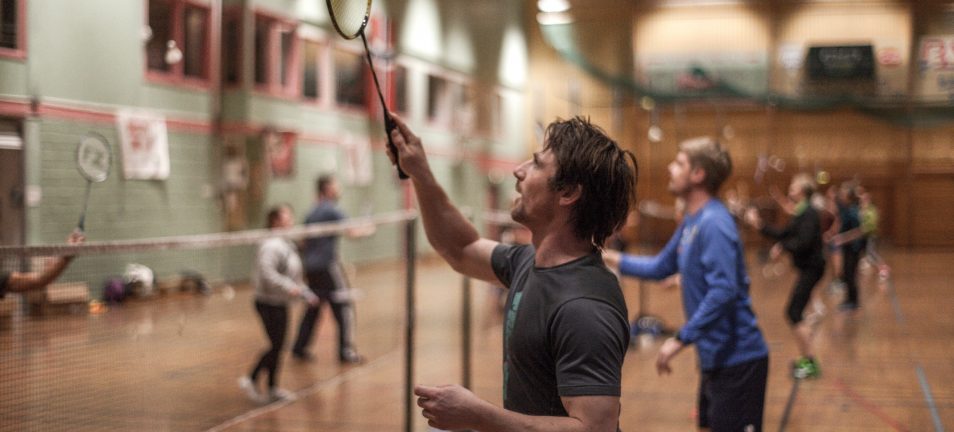April 4, 2019
Badminton is one of the most popular sports in the world with more than 300 million active players worldwide (Nielsen Sports, 2019), and is played by both males and females equally across a range of ages and skill levels.
The health and social benefits of badminton are wide and varied. Below is information taken from key research documents which identify and to some extent quantify some of these benefits:
1. Its flexible pace makes badminton a great activity for those with heart conditions.
- Regular play is also great for keeping hearts healthy, conditioning and strengthening the heart muscle, reducing hypertension and limiting the risk of blood vessels clogging [link].
2. Recreational badminton was found to lead to large aerobic adaptations such as increased VO2 max, time-to-exhaustion in an endurance exercise test and favourable reductions in heart rate and blood lactate [link].
- Playing recreational badminton raises heart rates to 80-85 per cent of the players’ predicted maximum heart rate which was significantly higher than the values obtained for tennis [link].
3. Playing recreational badminton helps to avoid immobilisation and various associated illnesses.
- For example: poor eyesight, excess weight, spinal problems and unbalanced posture, muscle weakness and slow reflexes [link].
4. Racket sports with a strong and enriched social connectedness such as badminton can extend longevity by as much as nine years.
5. Badminton can reduce or eliminate your risk for many health problems, such as high blood pressure, diabetes and obesity [link].
- It can also reduce your risk for coronary heart disease by reducing your triglyceride levels and increasing your “good” cholesterol.
6. Due to the running, lunging, diving and hitting elements, playing badminton burns fat at approximately 450 calories per hour.
7. Because badminton promotes physical fitness, it has psychological benefits such as reducing stress and anxiety [link].
- Exercise increases endorphins, which are the brain’s feel-good neurotransmitters, and has also been found to improve mood and sleep.
8. Badminton can help with weight loss and weight control because of its fat-burning and metabolism boosting qualities. Combined with proper diet, optimal weight loss may be achieved [link].
9. Badminton can decrease diabetes and the production of sugar by the liver and therefore decrease fasting blood sugar.
- One study from the Diabetes Prevention Program found that exercise decreased the incidence of developing diabetes by 58 per cent even better than medication.
10. Studies carried out at Baylor University’s Department of Physical Education (USA) showed that during 20 minutes of badminton, players made at least 350 changes in direction of 90 degrees or more.
- It also concluded that hitting a shuttlecock demands full-arm swings of a racket – more than some Major League Baseball players see during their games.
The following research studies also made major observations about the health benefits of badminton:
Journal of Sports Sciences
The impact of badminton on health markers in untrained females
Findings suggest that badminton should be considered a strategy to improving the health and well-being of untrained females who are currently not meeting physical activity guidelines.
- Heart rate in subjects was reduced by 10–15 beats per minute indicating large improvements in aerobic fitness.
- Systolic and diastolic blood pressures were lowered by 8-6 mmHg.
Research in Kinesiology
Badminton for the physical fitness of adolescents
- It develops coordination of movements, spatial orientation, equilibrium resistance and basic physical qualities (e.g. speed, endurance, strength, resilience, and agility).
- Badminton assists the prevention of stress.
- It helps their self-esteem enhancement and keeps away the problems with overweight.
- Playing badminton encouraged their positive attitude, self-awareness and better expression.
International Journal of Applied Sports Sciences
Heart rate and blood lactate responses during execution of some specific strokes in badminton drills
The study indicated that the heart rate and blood lactate responses during execution of overhead smash, overhead drop, overhead toss and shadow movements were high and no differences existed among them.
It also revealed popular and common badminton strokes exerted high cardiovascular and metabolic stress on the players. Repetitive execution of these strokes during training may develop both the aerobic and anaerobic capacities of the players.
The Journal of Sports Medicine and Physical Fitness
Oxygen cost and physiological responses of recreational badminton match play
- Recreational badminton match play can be categorised as vigorous intensity suggesting that it can be a viable means of achieving recommended physical activity and improving aerobic fitness.
- Across three 10-minute periods of play, VO2 was not significantly different while heart rate was higher in the third 10-minute period than the first and second 10-minute periods (P=0.001).
- Mean heart rate over 30 minutes was 167.9±9.4 bpm.

























